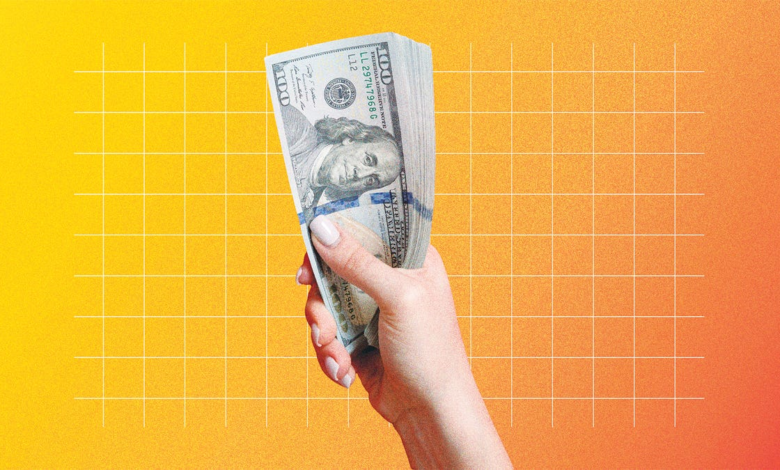IRS 2025 Tax Bracket Changes Could Be a Win for Your Paycheck

Now that we’re in 2025, the Internal Revenue Service’s updated income tax brackets and higher standard deductions have taken effect. Depending on your income level, these changes could put more money in your paycheck or boost your tax return next year.
If you fall into a lower tax bracket this year, you’ll pay a lower tax rate, which can slightly increase the amount of money you take home each pay period. A higher standard deduction could also help lower your tax bill or boost your income, in some cases.
It’s normal for the IRS to make tax code changes each year to account for inflation. This helps prevent “tax bracket creep,” which could push you into a higher tax bracket, even though inflation is eating into your wages.
These new tax changes went live on Jan. 1. Here’s everything you need to know about next year’s income tax brackets, the standard deduction increase and how tax changes could affect your money.
Read more: Will We See More Tax Breaks Next Year? Who Benefits Under Trump’s Tax Plan
How tax code changes affect your paycheck
When the IRS raises federal income tax brackets, you might fall into a different tax bracket than you did the year before — even if your income has stayed the same.
For example, if you made $48,000 last year, you fell into the 22% tax bracket. But if your income remains at the same level throughout 2025, you’d drop down to the 12% bracket. That means you’ll be on the hook for less federal taxes and will have less money withdrawn from your paycheck.
If you make more in 2025 than you did in 2024, however the amount your pay has increased will determine where you fall. You could still fall into a lower tax bracket or the same tax bracket. In some cases, your tax bracket and tax rate may increase.
2025 income tax brackets
Your federal income tax bracket helps determine how much you’ll pay in taxes for a given tax year, excluding the standard deduction or any itemized tax deductions.
2025 income tax brackets for single filers
| Taxable income | Federal tax rate |
|---|---|
| $11,925 or less | 10% |
| $11,926 to $ $48,475 | $1,192.50 plus 12% of income over $11,925 |
| $48,476 to $103,350 | $5,578.50 plus 22% of income over $48,475 |
| $103,351 to $197,300 | $17,651 plus 24% of income over $103,350 |
| $197,301 to $250,525 | $40,199 plus 32% of income over $197,300 |
| $250,526 to $626,350 | $57,231 plus 35% of income over $250,525 |
| $626,351 or more | $609,350 $188,769.75 plus 37% of income over $626,350 |
2025 income tax brackets for filers who are married, filing jointly
| Taxable income | Federal tax rate |
|---|---|
| $23,850 or less | 10% |
| $23,851 to $96,950 | $2,385 plus 12% of income over $23,850 |
| $96,951 to $206,700 | $11,157 plus 22% of income over $96,950 |
| $206,701 to $394,600 | $35,302 plus 24% of income over $206,700 |
| $394,601 to $501,050 | $80,398 plus 32% of income over $394,600 |
| $501,051 to $751,600 | $114,462 plus 35% of income over $501,050 |
| $751,601 or more | $202,154.50 plus 37% of income over $751,600 |
2025 income tax brackets for head of household filers
| Taxable income | Federal tax rate |
|---|---|
| $17,000 or less | 10% |
| $17,001 to $64,850 | $1,700 plus 12% of income over $17,000 |
| $64,851 to $103,350 | $7,442 plus 22% of income over $64,850 |
| $103,351 to $197,300 | $15,912 plus 24% of income over $103,350 |
| $197,301 to $250,500 | $38,460 plus 32% of income over $197,300 |
| $250,501 to $626,350 | $55,484 plus 35% of income over $250,500 |
| $626,351 or more | $187,031.50 plus 37% of income over $626,350 |
2025 standard deduction
For 2025, the standard tax deduction for single filers has been raised to $15,000, a $400 increase from 2024. For those married and filing jointly, the standard deduction has been raised to $30,000, up $800 from the previous year.
IRS Standard deduction
| Filing status | 2024 | 2025 |
|---|---|---|
| Single or married, filing separately | $14,600 | $15,000 |
| Married, filing jointly | $29,200 | $30,000 |
| Head of household | $21,900 | $22,500 |
Source for all charts: IRS (PDF).
Most taxpayers with simple tax returns claim the standard deduction, which reduces their taxable income. If you receive your wages solely from an employer as a W-2 employee, the standard deduction is usually the best way to maximize your tax refund. If you’re self-employed or have specific deductions you’d like to claim, you’ll itemize your deductions instead.
Other 2025 tax changes that may help you
There are other tax changes happening next year that could put more money in your paycheck. If you collect Social Security, you’ll receive a 2.5% cost-of-living-adjustment in 2025. The Earned Income Tax Credit also increased to $8,046 for filers with three or more qualifying children.
The Foreign Earned Income Exclusion, estate tax credits exclusion, annual exclusion for gifts and adoption credit also increased.
More tax advice:
https://www.cnet.com/a/img/resize/e560c37dac386ee214d8f551581dde9f0de258eb/hub/2023/02/14/1191221f-6efc-46ba-9535-f95434ffbd3c/cash-money-stack-100s-yellow-grid.png?auto=webp&fit=crop&height=675&width=1200
2025-01-11 06:00:11




